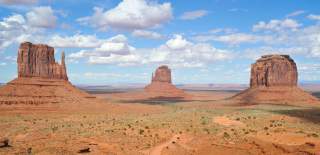Our Animal Fact Files focus on one animal that you can find in the New Forest and each blog will share lots of interesting facts about our animals, so everyone can learn and understand more about the wonderful wildlife in our beautiful National Park…


Top facts about Deer in the New Forest:
- There are 5 main types of deer that live in the New Forest. These are Fallow, Roe, Red, Sika and Muntjac.
- Fallow deer are easily spotted by their distinctive black and white rump. In the summer, they have a light-coloured coat with white spots, which then changes to an unspotted dark coat in the winter. Fallow deer are the only native deer with palmate antlers, which can reach up to 70cm long.
- A smaller deer species are the Roe deer, measuring just 60-75cm in height. Their rump is white and they also have a white patch under the chin. Roe deer have short, three-pointed antlers. The peak time for their activity is at dawn and dusk.
- The Red deer is the largest wild animal in Britain, at 1.2 metres high. They are native to the UK. Their coat is a rich red-brown colour. They can mostly be found in the west of the New Forest, and there are around 125 in the National Park.
- Sika deer are a similar size and colour to fallow, but are slightly darker. They are originally from Japan and those in the New Forest descended from the Sika given to the 2nd Baron Montagu of Beaulieu by King Edward VII. They are kept in the Beaulieu area, to avoid cross-breeding with Red deer.
- The smallest breed of deer in the New Forest are the Muntjac deer, which are dog-sized creatures with long back legs. Muntjac aren’t often seen in the New Forest, but when you do, they may bark, scream or squeak when alarmed.
- Rutting season (mating season) happens once a year for most deer species, with the timing slightly varying throughout the year. During the rut, competing male deer, will engage in a series of behaviours showing off to the female deer to establish dominance over other stags. If a winner isn’t established, the two competing stags will lock antlers and fight for dominance. All deer have differing gestation period.
- After rutting season, male deer will typically lose their antlers, as their testosterone goes way down which makes the antler tissue break up. The antlers will begin to grow back in late spring.
- All 5 deer species found in the New Forest are herbivores and feed on grasses, leaves, brambles, shoots, sedges and other plants. Some also eat wild fruit and berries.


Please always follow the New Forest Code in the New Forest. Do not go near or feed deer or any other animals in the New Forest. Drive carefully, deer have no road sense and are known to run out into the road, especially between the hours of dusk and dawn, when they are most active. See the full New Forest Code below:
.gif)
-2.gif)

